This blog post has been syndicated at ExpertClick.com. What does it mean that this article is “ syndicated”? See end of article for explanation.
After 5 Years of touring with 40 venues and millions of fans, like most famous movie stars, life has not been easy. Have you seen #SavingBanksy, the full length movie about this illegal painting that was saved from obliteration by a Hollywood Movie Director?
Fine Art Conservation Laboratories in Santa Barbara received this week an unusual work of art of world fame: 10 graffiti-covered redwood boards that were ripped from the side of a Victorian home on Haight Street in San Francisco.
Spray-painted on the side of the upper story siding, the omni-famous iconic rat is clutching a spray-gun for graffiti, the stenciled work of the yet unidentified outlaw street art superstar Banksy, who took the occasion of a wedding of a friend to promote his new movie in San Francisco in 2010.
Taking down the illegal street art before local statutes for graffiti removal got the property owner in trouble, would have obliterated the famous artwork forever. But once removed, six and seven figure bids were offered for the piece. But the savior of the painting says he can’t sell it without breaking a promise.
Brian Greif’s effort to obtain and restore the painting – and now, to display it publicly – illustrates the fervor that surrounds Banksy’s guerrilla artworks. It also stirs up a complicated debate about street art, its cultural value, and efforts to memorialize and monetize a form of expression that wasn’t intended to last. Yet, removed, it was accessible to a wide and enthusiastic audience (that still got to see the iconic rat for free) and this week it came to the ArtDoctor, Scott M. Haskins after a 5 year tour of over 40 venues and millions of fan views for a check-up.
Banksy wasn’t as mainstream in April 2010 when he made his run through San Francisco, leaving about 10 works in such neighborhoods as the Mission, Chinatown and the Haight. The visit coincided with the release of “Exit Through the Gift Shop,” his Oscar-nominated documentary that prods at the absurdities of the hyper-commercialized art market. After Banksy’s visit, Greif scrambled to see all of the works. But many were already painted over by building owners seeking to comply with city law, which considers graffiti “visual pollution.”
One such business owner was Sami Sunchild, founder of the iconic Red Victorian bed-and-breakfast inn on Haight Street. Banksy, who uses stencils so he can move quickly, painted the rat on the side of the house from the roof of an adjacent building. Sunchild, who died several years ago at age 87, was about to paint over the work when Greif approached her and cut a deal to remove the wood siding. He did so carefully in December 2010, hiring Brothers Collins Woodworking of Cotati, which specializes in historic buildings. Part of the bargain with Sunchild, he said, was a promise that he would take the piece but not sell it.
Street artists regularly paint over each other’s work, but, as Banksy’s popularity grows, so have preservation efforts. Some building owners have covered his works with Plexiglas. Or, as in Greif’s case, people have removed pieces completely. Removing the artwork involved cutting off the building the redwood siding with the “mural” (and then repairing the building to look perfect). Interestingly, as soon as the building was put back into order, someone else took advantage of the featured location in the news and turned into a marketing opportunity to promote discussion.
This week, art restorers Scott Haskins and Virginia Panizzon unpacked the wood siding with the valuable artwork from the Red Victorian at his Santa Barbara lab. Haskins and Panizzon have been restoring major artworks for 40 years. He was the team leader in restoring Gottardo Piazzoni’s “The Sea” and “The Land” murals, which were painstakingly removed from San Francisco’s old Main Library and now sit in the new de Young Museum in Golden Gate Park. He has consulted on Banksy restorations in the past and said the rat painting shouldn’t require much work. “It’s basically a preservation and reassembly of the piece. It is in not bad condition and looks good,” Haskins said.
His plan is to keep the work light and portable using “airplane technology” – affixing the slats to 1-inch-thick aluminum honeycomb material. Greif doesn’t want the piece to look new. Instead, he wants to preserve the street-art aesthetic. He wants the piece to look like it did on the side of the Red Victorian. “When we’re done, it’s going to look like you are standing on the rooftop looking at the wall,” Haskins said.
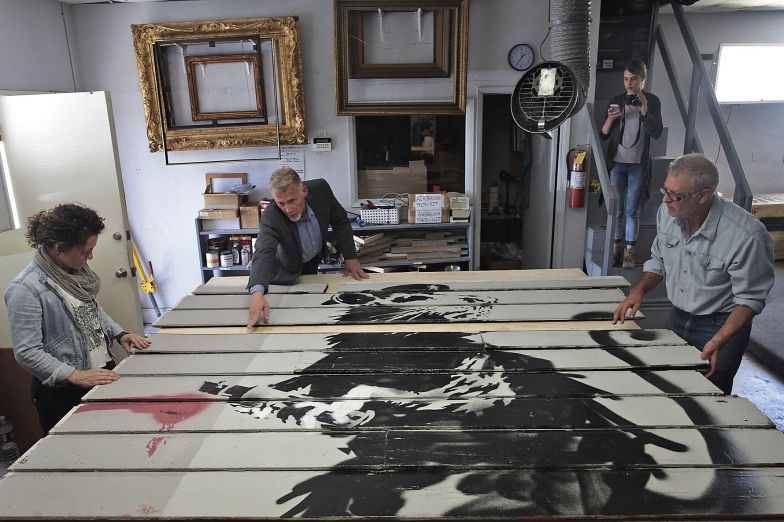
Banksy’s iconic rat, under the watchful eyes of Scott M. Haskins and Virginia Panizzon, at Fine Art Conservation Laboratories for reassembly, preservation, restoration and preparation for a massive tour.
Preserving and restoring the piece correctly and respectfully was one task. But setting up the venues for public display was a bit difficult, at the beginning, said Greif. But once it was known that the popular artwork was available for exhibit, the rat became a celebrity and toured over 40 venues in 5 years. Still, institutional attitude, a thing that Banksy hates, was rampant in 2010.
As he discovered, curators were particular about their use of gallery space – and the context in which art is displayed. Besides the fact that planning gallery space occurred years in advance, they got sidestepped with comments like (Greif was in talks with SFMOMA and the de Young) “You’ve got to be considerate (about) if it was the artist’s intent,” said Zarobell, who was curator at SFMOMA when Greif made his inquiries. He said he contacted Banksy’s people and found that the artist apparently didn’t want the work shown in a museum… duh!!!
Though not looked at seriously in 2010, I wonder what would be their response to its availability now that Banksy is the most famous street artist in the world that captures the attention of millions?
Greif continues with his project, finding the rat new opportunities. Greif’s only stipulation, as given him by Banksy: The work must be seen publicly, for free. “Street art,” he said, “is made to look at and talk about.” One man’s effort to obtain, restore, and publicly display the street artist’s guerrilla artworks illustrates the fervor that surrounds this social movement. Never has it been more popular and more discussed… even in the digital worlds. More on that later.
Thoughts have been discussed about providing this work of art for public ownership through NFTs (digital collectibles). What do you think?
Questions? Call Scott M. Haskins 805 570 4140
This blog post has been syndicated at ExpertClick.com. What does it mean that this article is “ syndicated”?
Its a bit of a coup to get an article syndicated, and its certainly prestigious, as additional “proof” that the info and the author are considered far and wide authoritative and an expert in the field. So, enjoy and trust our content!! This article was syndicated for USA national redistribution.
When something is published, usually by a news source, and is made available through different venues for redistribution then it is said to be syndicated. Publications that are syndicated are usually considered of value as being from an expert, educational, new worthy or valuable for wide popular interest.
This website’s syndication included:
1) Included in the ExpertClick Press Room as a ‘press release.’ (different than a ‘news release’)
2) Included in the ‘Speaker Bureau Platform Page.’
3) Shown on the front page of ExpertClick, in rotation with other most recent posts.
4) Shown in the ‘News Release Results page.’
5) Included on optimized for searches on all my topics of expertise.
6) Shown via RSS linked from the Press Room. (A specific way news is actively distributed within the industry)
7) Shown in the full RSS feed from ExpertClick. (Another, different specific way news is actively distributed within the industry)
8) Syndicated to LexisNexis.com As of 2006, the company had the world’s largest electronic database for legal and public-records related information, distributor of academic content and expert opinion.

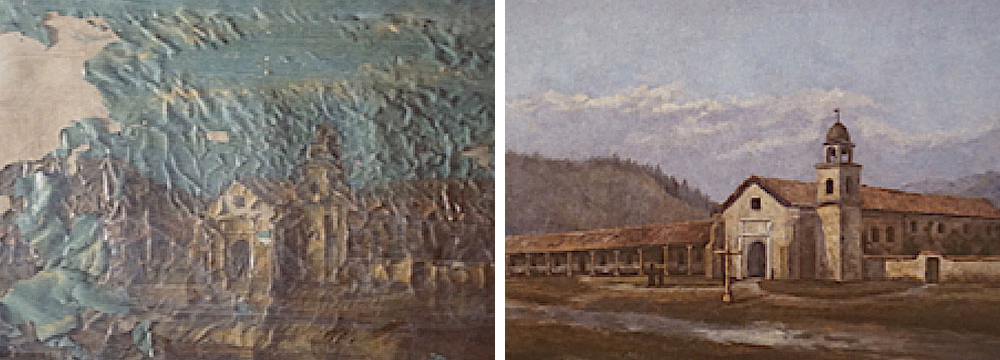
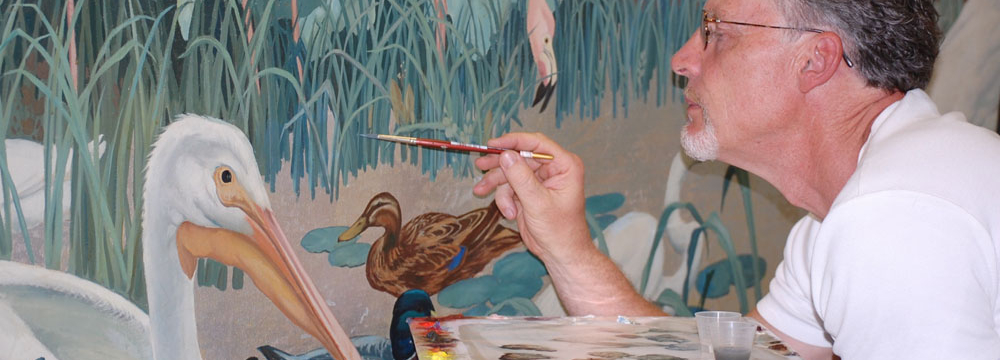
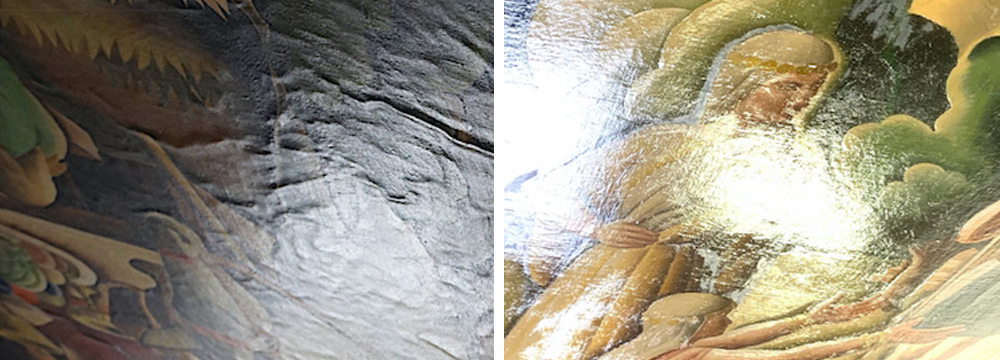
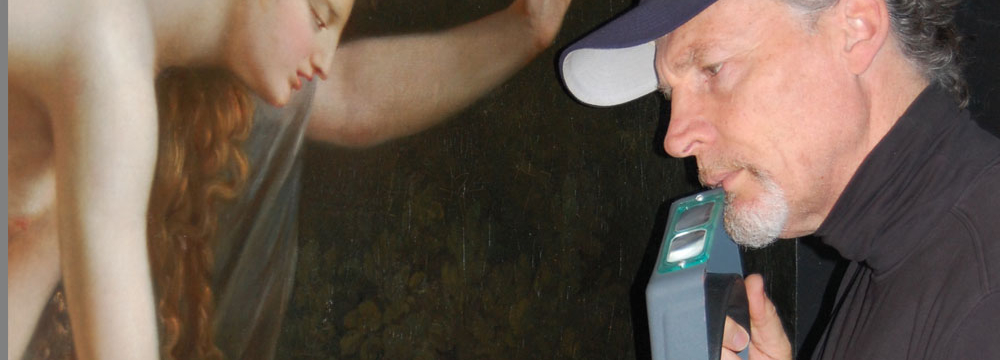
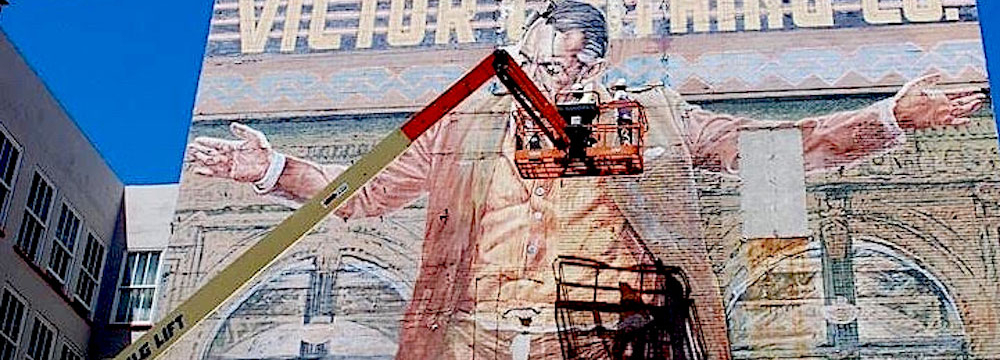
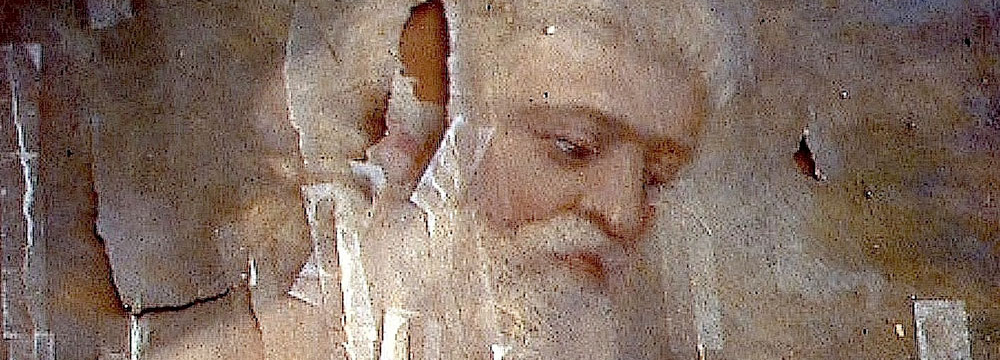
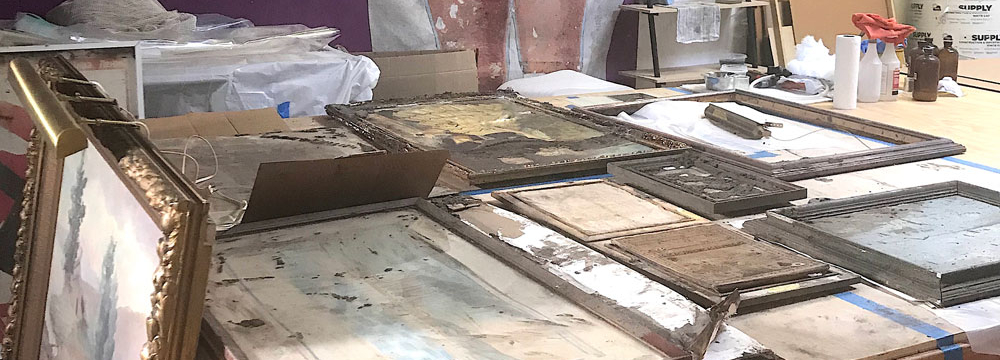

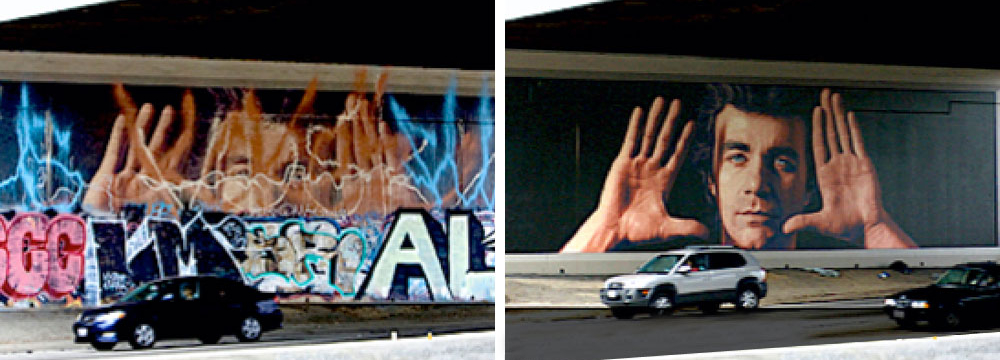
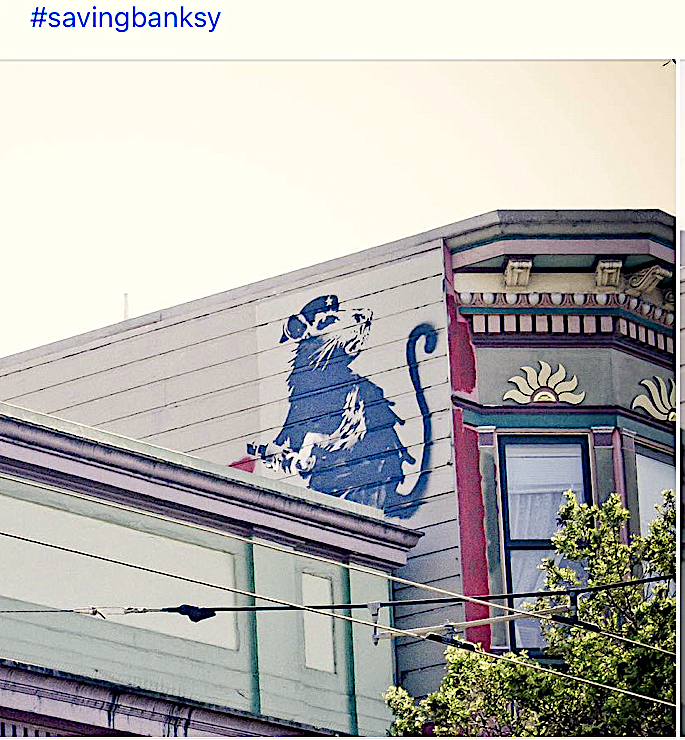

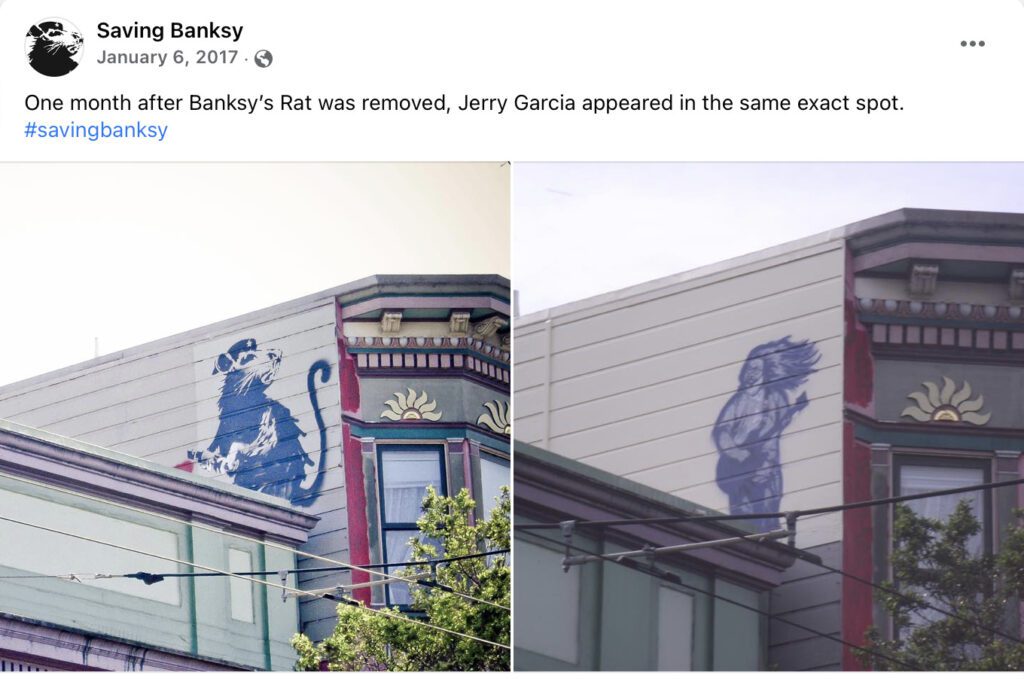

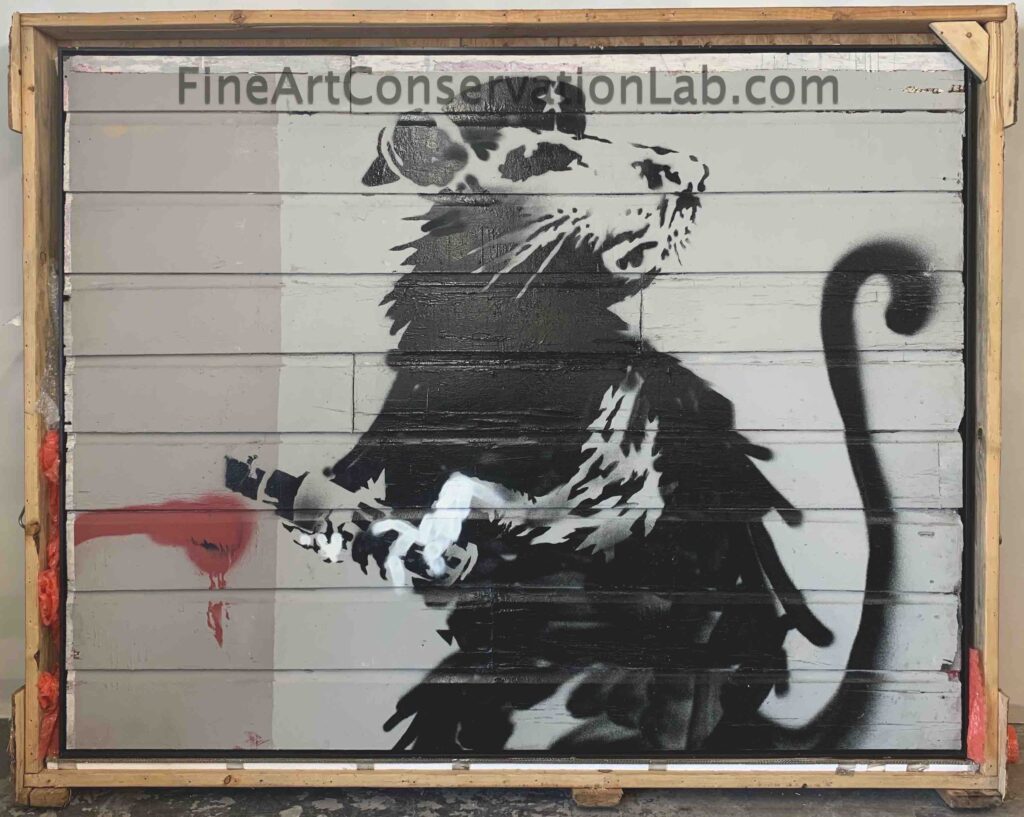
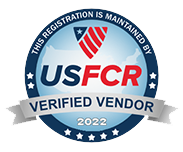
It’s so funny to see major museums wanting to feature Bansky where they once didn’t even want to consider it. How the wheels have turned…
Street art must remain free to see, to admire, no matter where it is held, whether on the street or in a museum. I totally agree with this.
I wasn’t surprised to see someone adding a new piece of street art where Bansky’s Rat once was. For some that means they can say “I did that”
That art quickly got painted out.
Graffiti is not “visual pollution”. It’s a way of expressing oneself. We, as a society, need to define this term better. We need to take care of the graffiti that is actually very meaningful and not just paint over it.
Private property rights, public property, safety issues… there are a lot of factors involved.
Street art shouldn’t be illegal. Local authorities must understand this is a way of expressing their thoughts for some people and they should have places designed for this. Why not encourage creativity and give it wings instead of trying to deny it?
So, you would rather have chaos in charge? This question has nothing to do as to whether you like the style and art value.
While you definitely have a point we must also consider the people that “suffer” because of street art. Someone who had their house painted on might not be happy and we must also consider their feelings. It’s the right of the creator to create and it’s also the right of the house owner to be upset when this happens on their property.
For some reason I didn’t realize the Rat was so big but seeing it on that table in the image, made me realize the real size. How did Bansky manage to create this without being spotted?
I think he asked the property owner before he did it.
It’s amazing what one can do when they put passion behind it, no? Bansky doesn’t care about the money, he just wants to create something that will make us think.
Actually, Ashley, Banksy is a maniac for control over his work and making money. He is ALL about making the BIG money and his compensation for his secretive identity has been fame and a major fortune. For example, he did a print of one of his images and sold a few of them for $50k each… when the price on the market went to over a $1 million each he sold the others he had held back. I don’t criticize him for his business that he has created. But I am not drinking the kool-aid that he’s some urban legend that he doesn’t want notoriety and his art is for the “people.”
WOW!!! I had no idea! Thanks for sharing this, Scott! I don’t blame him for doing it but I had no idea he did this. I wish things weren’t like this but they are…
Street art (some of it at least) has certain cultural value and should be protected. I’m glad there are people like Brian Greif and Scott M. Haskins that are doing what they can to make sure such art stands the test of time.
Thanks John for your comment.
I think with street art like Banksy’s the story behind each piece and the process of creating the pieces gives value to his work. His combination of graffiti art with installation and performance makes his art more than just another stencil on a wall. Whether you like his style or not, his approach defiantly makes you think.
Thanks for your comment Sarah. There is certainly “a vibe” about Banksy’s art that is made up of all the things you mention. But don’t think that its a socially organic fame that he has attained. It is voraciously and fiercely created and protected by Banksy and his “team” to create a world wide demand and hunger for his work. They are “dialed in” when it comes to knowing who their demographic is and how to reach them. My opinion is based on my personal contact with people that work directly with “his people.”